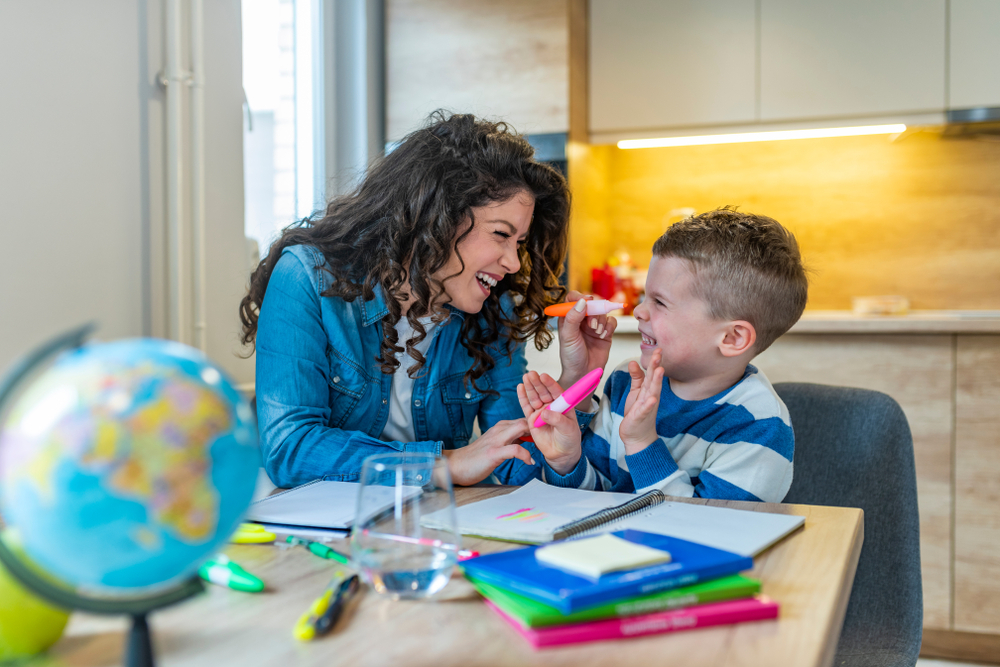
Dyslexia is a common learning difficulty that primarily affects the skills involved in accurate and fluent reading and spelling. Characterized by difficulties with phonological processing, verbal memory, and verbal processing speed, dyslexia is not an intellectual disability; individuals with dyslexia have a normal range of intelligence. It is important to recognize that dyslexia is a specific learning difference, which means that it causes issues with certain abilities used for learning, such as reading and writing.
How Dyslexia Affects Reading
Reading is a complex cognitive process that involves the decoding of symbols to derive meaning and the ability to read quickly and fluidly. For those with dyslexia, these processes are affected in several ways:
Phonological Decoding: Dyslexics may struggle to split words into their component sounds and to blend sounds into words. This makes phonological decoding—an essential skill in early reading development—a significant challenge.
Word Recognition: Due to difficulties with phonological processing, those with dyslexia often find it hard to recognize words automatically, which is known as poor word recognition.
Reading Fluency: Without automatic word recognition, reading can become a slow and laborious process for dyslexics. This lack of fluency can significantly hinder the ability to understand text, as much of their focus is on decoding individual words.
Spelling and Writing: These reading difficulties also translate into spelling and writing. Dyslexics might find it hard to spell words correctly and may often write words as they sound phonetically, which can lead to spelling mistakes.
Comprehension: Difficulties with reading fluently and accurately can affect the ability to extract meaning from text. Comprehension challenges arise because cognitive resources are diverted from understanding to decoding.
Emotional and Educational Impact
The impact of dyslexia on reading extends beyond the mechanics of reading itself. The challenges faced by individuals with dyslexia can lead to frustration, low self-esteem, and a dislike for reading. Early identification and intervention are crucial for helping dyslexics develop coping strategies and skills to manage their condition effectively. Educational support, tailored teaching methods, and the use of technology can greatly mitigate the educational impact of dyslexia.
Dyslexia is a lifelong condition, but with the right support, individuals with dyslexia can achieve academic success and excel in their chosen careers. Understanding the depth of dyslexia’s impact on reading is the first step toward empathy and the development of effective teaching strategies to assist dyslexic learners.
What Is a Multisensory Approach to Learning?
A multisensory approach to learning is an educational method that engages multiple senses simultaneously to enhance memory and the ability to learn. This comprehensive strategy combines visual, auditory, kinesthetic, and tactile senses to facilitate the processing and retention of information. By doing so, it caters to various learning styles and can be particularly beneficial for students with learning differences, such as those with dyslexia.
Multisensory learning offers an enriching and inclusive educational environment that can cater to a diverse array of learning needs. By addressing the individual sensory strengths of each learner, educators can create a more dynamic and effective teaching approach that can profoundly impact students’ mastery of subjects, particularly for those with learning difficulties such as dyslexia.
Visual Component (Seeing)
- Involves the use of images, colors, maps, and diagrams.
- Helps learners visualize concepts and relationships between ideas.
- Can include reading or watching dynamic presentations to reinforce learning.
Auditory Component (Hearing)
- Incorporates listening to spoken words, sounds, and music.
- Enhances learning through discussions, lectures, and audio recordings.
- Engages learners by involving rhythmic elements or mnemonic devices.
Kinesthetic Component (Moving)
- Relates to movement and physical activities.
- Encourages learners to use gestures or dramatizations to understand concepts.
- Improves learning by incorporating actions or exercises that embody the lesson.
Tactile Component (Touching)
- Involves hands-on activities and the use of manipulatives.
- Allows learners to build or create physical models to grasp complex ideas.
- Facilitates memory through the physical sensation of touch.
When implemented correctly, it has the potential to transform the educational experiences of all students, enabling them to reach their full academic potential. By engaging various senses, multisensory learning bridges gaps in understanding and allows for more meaningful and lasting learning experiences.
Why Multisensory Learning Matters for Children with Dyslexia
Understanding why multisensory learning is significant for children with dyslexia requires a deeper dive into how this condition affects the learning process and how multisensory techniques address specific dyslexic challenges.
Enhancing Engagement and Motivation
Engagement and motivation can be low in children with dyslexia due to frequent frustrations in traditional learning environments. Multisensory learning can make the learning process more enjoyable and less intimidating, which in turn encourages ongoing engagement with the material. By engaging learners in a way that feels more like play or exploration, they may become more invested in their learning journey.
Facilitating Better Retention and Recall
Research indicates that the more senses involved in the learning process, the more likely information is to be retained. For children with dyslexia, the simultaneous engagement of multiple senses helps create multiple associations with the same piece of information, which can result in improved recall and memory strength.
Customizing the Learning Experience
The flexibility of multisensory learning allows for customization to fit each child’s unique needs. Educational content can be tailored so it resonates better with each learner, helping to close gaps in comprehension that might exist for dyslexic children in a one-size-fits-all learning environment.
Promoting Neurological Linkages and Brain Development
There is evidence suggesting that engaging multiple senses in learning stimulates the growth and strengthening of connections within the brain. This neurological development is crucial for children with dyslexia, as it may enhance the brain’s capacity to process linguistic information more efficiently.
Encouraging Holistic Development
By integrating multisensory learning, children with dyslexia can develop a range of skills beyond literacy. It can support the development of fine motor skills through tactile activities, improve listening skills through auditory exercises, and even strengthen visual-spatial skills through the use of visual aids.
For children with dyslexia, multisensory learning isn’t just beneficial—it’s critical. This approach aligns with their unique way of perceiving and interacting with the world, allowing them to access information in ways that circumvent some of the challenges of dyslexia. The ultimate goal of multisensory learning is to provide these children with the tools and experiences they need to build confidence in their abilities and to achieve academic success.
By implementing a multisensory approach, educators can create a learning landscape filled with diverse opportunities for children with dyslexia to flourish, setting them on a path where the learning difficulties associated with dyslexia become less of an insurmountable obstacle and more of a manageable challenge.
The Imperative of Multisensory Learning Methods
The journey through education for children with dyslexia can often feel like navigating a labyrinth; complex and filled with potential setbacks. However, the multisensory approach emerges as a guiding light, illuminating a pathway to successful learning. This method, by engaging visual, auditory, kinesthetic, and tactile senses, is not merely an alternate educational strategy – it is a transformative process that reshapes how children with dyslexia comprehend and retain knowledge. Let’s delve into why this approach should be widely embraced and effective strategies for its implementation.
The Necessity for Sensory Engagement
Cognitive Enrichment
At the crux of a multisensory learning strategy is the enrichment of cognitive experiences for all learners, especially those with dyslexia. This technique is predicated on the fact that when multiple senses are stimulated, the brain’s ability to form and retain new connections is notably amplified. Studies have illustrated that employing multisensory environments can significantly improve word reading, spelling abilities, and phonological awareness in students with dyslexia.
Universal Accessibility
In an educational landscape that champions inclusivity, multisensory approaches guarantee that no learner is marginalized. Every student, regardless of their learning preferences or challenges, is given an equitable opportunity to access the curriculum. This democratization of learning techniques is pivotal in an era that seeks to honor diverse learning needs.
Strengthening Memory and Retention
The multisensory method fortifies memory retention and recall. For instance, when a student engages in writing flashcards, the act of writing (kinesthetic), the visual cues from the cards (visual), and verbalizing the information (auditory) work in concert to cement the learning experience. This multidimensional engagement ensures a more robust consolidation of information and a greater likelihood of retrieval when needed.
The Strategic Adoption of Multisensory Techniques
Educator Empowerment
For multisensory learning to be effective, educators must be equipped with the necessary tools and training to integrate these strategies into their daily instruction. Professional development programs play a critical role in this regard, enabling teachers to skillfully design and deliver lessons that appeal to a wide range of sensory preferences.
Resource Allocation
Schools and educational institutions must prioritize the allocation of resources toward the creation of multisensory materials. This includes but is not limited to interactive whiteboards, textured learning aids, and audiovisual equipment. An investment in these resources underscores a commitment to a more inclusive educational paradigm.
Tailored Learning Plans
Each child is unique, and therefore, the application of multisensory strategies must be customizable to individual needs. Specialized learning plans that leverage a student’s strengths can dramatically improve engagement with the material, leading to greater academic outcomes.
The Case for Widespread Implementation
An educational system that adopts a multisensory approach is inherently more dynamic and equitable. As research continues to support its efficacy, there is a compelling case for this to become standard practice in classrooms around the world. By fostering an environment that is responsive to the needs of all students, particularly those with dyslexia, we are setting a precedent for a future where learning differences are effectively addressed, and all students have the opportunity to thrive.
The expansion of the conclusion seeks to not only summarize the importance of a multisensory approach but also to advocate for its broad adoption in educational settings. By emphasizing the scientific backing, the universal benefits to all learners, the necessary strategies for implementation, and the compelling reasons for widespread integration, the expanded conclusion provides an authoritative and detailed closure to the topic without repetition of the article’s previous points.
FAQ’s
How does multisensory learning support children with dyslexia in their educational journey?
Multisensory learning tailors educational experiences to meet the diverse sensory needs of children with dyslexia, permitting them to utilize their strengths and improve areas of difficulty. By engaging sight, sound, touch, and movement, it creates a rich learning environment that fosters better retention and comprehension while developing neurological pathways that support language processing.
Why is a multisensory approach to learning considered crucial for dyslexic students?
Dyslexic students often face challenges with phonological processing and reading fluency that traditional teaching methods may not adequately address. A multisensory approach is crucial as it involves using various senses to support the learning process, helping these students to form stronger cognitive connections, improve memory, and make the learning experience more accessible and engaging.
What are the key benefits of incorporating multisensory learning techniques in education?
The key benefits include enhanced memory and learning through stimulation of neural pathways, accommodation of different learning styles, assistance in overcoming various learning difficulties, and improved student engagement. Multisensory learning creates multiple associations with information, thereby improving recall and helping all children, including those with dyslexia, succeed academically.
How can multisensory learning be integrated into the classroom to assist students with dyslexia?
Educators can integrate multisensory learning by designing lessons that involve visual aids, auditory activities, kinesthetic movements, and tactile experiences. This inclusion helps students with dyslexia to engage more fully with the educational content, allowing for information to be processed in a manner that aligns with their strengths and compensates for their challenges.
What evidence supports the effectiveness of multisensory learning for students with dyslexia?
Research has shown that multisensory instruction significantly enhances the learning outcomes for students with dyslexia, particularly in reading and spelling. This method has been found to stimulate brain regions associated with learning and memory, demonstrating its effectiveness in helping dyslexic learners to overcome their educational hurdles.
Discover the Transformative Power of Readability Tutor for Your Child with Dyslexia
How Readability Helps Children With Dyslexia
Navigating the complexities of dyslexia can be challenging for any child, but with Readability, your child’s journey towards improved reading and comprehension doesn’t have to be a struggle. Readability was designed to align with the multisensory approach to learning, making it an essential ally for children with dyslexia.
With Readability, your child will benefit from an engaging, interactive reading experience that synthesizes visual, auditory, and responsive feedback. Our AI-driven, voice-based tutor transforms reading sessions into a dynamic learning process that adapts to your child’s unique needs, enhancing their ability to decode language and comprehend text.
Don’t let dyslexia define your child’s relationship with reading. Join the Readability Tutor family today and watch as your child overcomes the reading challenges of dyslexia.
Start your free trial now and take the first step towards turning reading into a rewarding adventure for your child!

 Español
Español
